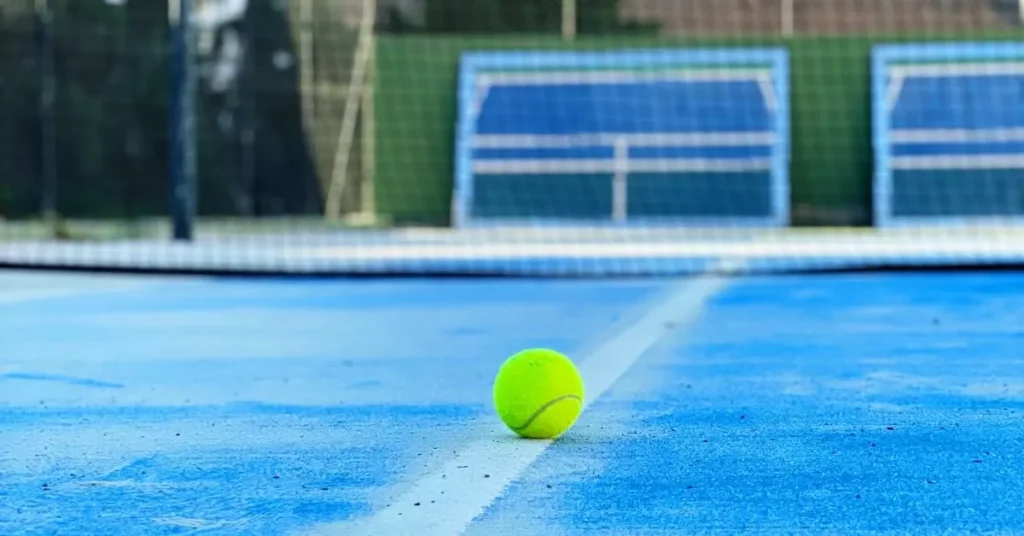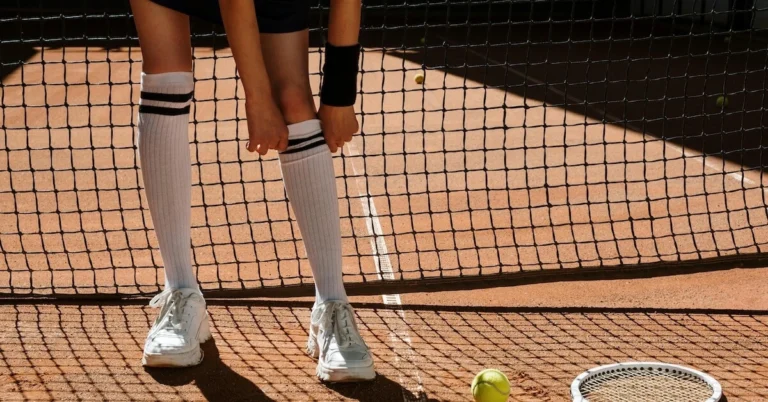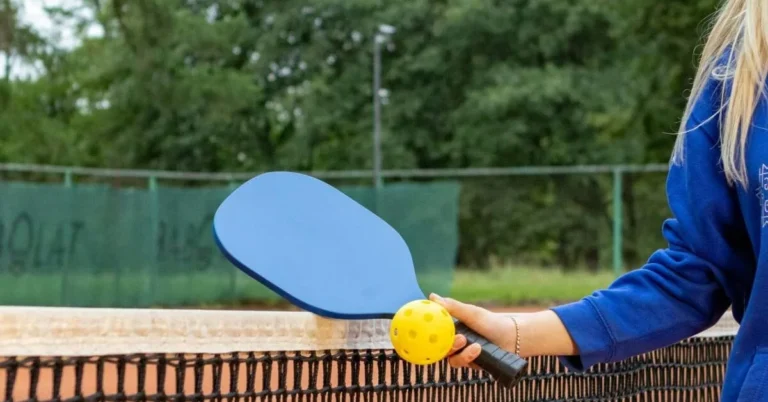Tennis is a popular sport that requires a combination of skill, strategy, and athleticism. One aspect that has become increasingly important is the use of challenges in tennis. Challenges in tennis are a way for players to question a line call made by the umpire, and have it reviewed by advanced camera and ball tracking technology. The rules for challenges in tennis are an integral part of the game, and understanding them is crucial for players and spectators alike.
The rules of tennis state that each player gets three challenges per set. These three challenges in tennis apply to both the tie-break and advantage methods of scoring sets. A challenge is not charged to a player who is successful in their challenge attempt, but a challenge is charged if the player is unsuccessful. Players can only make a challenge if play has stopped, meaning either the shot as called ended the point, or the player stopped playing the point. They are allowed to return the ball once, but have to stop playing after that if they want to challenge the line umpire’s ruling.
Knowing the rules of challenges in tennis can be a game-changer for players. A successful challenge can mess with an opponent’s rhythm and give a mental edge to the challenging player. Players should use line call challenges in tennis smartly for momentum and confidence when it counts. Even tennis balls push boundaries, like rebellious teens. Challenges for out of bounds balls are a common occurrence, and players must be aware of the rules to use them effectively.
✅ aluminium handle ✅ reversible and replaceable brush head
❌ only works manually, not automatically
The Challenge System
Tennis is a sport that relies heavily on the judgment of the officials, but sometimes they can make mistakes. In such cases, the challenge system comes into play. The challenge system allows players to question the decisions made by the officials on the court.
When a player challenges a call, they are essentially questioning the decision made by the official. If the player feels that the official made an incorrect call, they can challenge it. The challenge system is a way to correct these incorrect calls and ensure that the game is played fairly.
Each player is allowed three challenges per set. If the player is successful in their challenge attempt, they will not be charged with a challenge. However, if the player is unsuccessful, they will lose one of their challenges in tennis. If the set goes to a tie-break, the players are given an additional challenge.
The challenge system has been made possible by technology. The officials use electronic review systems to review disputed calls. The review system includes video replays, and the officials use it to make a verdict on the disputed call. If the official determines that the call was incorrect, the point is replayed. If the call was correct, the player who challenged the call loses a point.
It is important to note that the player must challenge the call promptly. If the player continues to play after the disputed call, they lose the right to challenge it. Additionally, if the point-ending shot has been played, the player cannot challenge the call.
Challenges in Tennis: Role of Umpires and Officials
Tennis is a sport that is played with a high level of precision and accuracy. Therefore, it is essential to have umpires and officials who can ensure that the game is played fairly and according to the rules. Umpires and officials are responsible for making calls on various aspects of the game, including calls on the lines, net, and foot faults.
The chair umpire is the head official who sits in a high chair at the center of the court. The chair umpire is responsible for making the final decision on any call that is disputed by the players or the line judges. The chair umpire is also responsible for keeping track of the score and ensuring that the players follow the time limits.
Line judges are officials who stand on the sidelines of the court and are responsible for making calls on whether the ball is in or out. Line judges are usually positioned at the corners of the court and are responsible for making calls on the service line, the baseline, and the side lines.
The line umpire is another official who is responsible for making calls on the lines. The line umpire is usually positioned on the service line and is responsible for making calls on whether the serve is in or out.
Umpires and officials play an essential role in ensuring that the game is played fairly and according to the rules. They are responsible for making calls on various aspects of the game, including calls on the lines, net, and foot faults. They work together to ensure that the game is played with precision and accuracy, and that the players follow the rules and regulations of the game.
Court Boundaries and Markings

Tennis is played on a rectangular court with specific boundaries and markings. The court is divided into two equal halves by a net, which is placed perpendicular to the baseline. The court is marked with several lines that determine the boundaries of the playing area.
The singles sideline runs parallel to the doubles sideline and is located 3 feet from the center mark on either side of the court. The doubles sideline is the outermost boundary of the court and is located at the edge of the court. The baseline is located at the end of the court, and the service line is located 21 feet from the net, parallel to the net.
The center mark is located at the midpoint of the baseline and divides the court into two equal halves. The net posts are placed at the ends of the net, and the net is 3 feet high at the center and 3.5 feet high at the posts.
The dimensions of a tennis court are 78 feet in length and 36 feet in width for doubles matches. For singles matches, the court is narrower, measuring 27 feet in width. The total playing area of the court is 2,808 square feet for doubles matches and 2,106 square feet for singles matches.
The court markings are crucial for gameplay and must be followed to ensure the court is regulation size. The white lines on the court are used to determine if a ball is in or out of bounds. Players may challenge certain calls made by the umpire or line judges by using a limited number of challenges in tennis.
In-Game Rules and Regulations
To ensure fair play in tennis, there are specific in-game rules and regulations that players must follow. Here are the 4 most important rules and regulations to keep in mind:
1. Faults and Double Faults
A fault occurs when the server fails to serve the ball into the correct service box or hits the net with the serve. The server is allowed two attempts to serve the ball correctly. If the server fails to serve the ball correctly on both attempts, it is considered a double fault, and the point goes to the receiver.
2. Returns and Rallies
After the serve, the receiver must return the ball before it bounces twice on their side of the court. If the receiver fails to do so, the server wins the point. Once the ball is in play, players must hit the ball back and forth over the net until one player fails to return the ball or hits the ball out of bounds.
3. Between Points
Between points, players are allowed to take a maximum of 25 seconds to serve the ball. If they exceed this time limit, they may receive a warning or be penalized with the loss of a point. Additionally, players are not allowed to receive coaching during a match, except during certain breaks in play.
4. Foot Faults
A foot fault occurs when the server steps over the baseline while serving the ball. If this happens, the server loses the point. Additionally, players are not allowed to touch the net or cross over to their opponent’s side of the court during a point.
Challenges in Tennis: Historical Perspective

Tennis has come a long way since its inception in the 12th century. The game has evolved in many ways, including the introduction of challenges to the rules of the game. The history of challenges in tennis dates back to the 1970s, when the International Tennis Federation (ITF) introduced the concept of instant replay to help umpires make more accurate calls.
Over the years, the use of technology to assist with challenges in tennis has become more prevalent. The Women’s Tennis Association (WTA) began using the Hawk-Eye system in 2005, which tracks the trajectory of the ball and can determine whether it is in or out of bounds. This system has been widely adopted in professional matches and has helped to reduce the number of disputes over calls.
Despite the use of technology, human error still plays a role in challenges. Umpires can make mistakes, and players can sometimes challenge calls that are actually correct. To address this issue, the ITF has implemented a limit on the number of challenges in tennis that players can make during a match. This limit varies depending on the tournament and the level of play.
Challenges in Tennis: Fairness and Sportsmanship
In tennis, fairness and sportsmanship are essential components of the game. Players are expected to play fair and make correct calls, even if it means admitting to a wrong call. The opposing player also has a responsibility to accept the calls made by their opponent, even if they disagree with them.
Challenges in tennis are designed to ensure that the correct calls are made on the court. Players are allowed to challenge a call if they believe it is wrong. If the challenge is successful, the point is replayed. If the challenge is unsuccessful, the player loses one of their challenges in tennis.
The use of challenges in tennis helps to promote fairness on the court. It allows players to correct wrong calls and ensures that luck does not play too big of a role in the outcome of the game. However, players must also use challenges responsibly and not abuse the system to gain an unfair advantage.
Sportsmanship is also an important aspect of challenges in tennis. Players should not use challenges to delay the game or disrupt their opponent’s momentum. They should also not challenge calls that are clearly correct or use challenges as a way to overcome obstacles in the game.
FAQ
Are challenges still allowed in professional tennis?
Yes, challenges are still allowed in professional tennis. The use of technology has made it possible for players to challenge line calls, and the challenge system has become an integral part of the game. The use of challenges has also added an element of excitement for players and spectators alike.
What are the rules for challenging line calls in tennis?
In tennis, players are allowed to challenge line calls if they believe that the call made by the umpire is incorrect. Players are given a limited number of challenges per set, and if their challenge is successful, they retain the challenge. If their challenge is unsuccessful, they lose the challenge. Players are not allowed to challenge calls that are made using a subjective judgment, such as foot faults or net touches.
Can players challenge line calls at all levels of tennis?
The use of challenges is not limited to professional tennis. Players at all levels of tennis are allowed to challenge line calls. However, the rules and regulations regarding challenges may vary depending on the level of play. For example, in some lower-level tournaments, players may not be allowed to challenge line calls at all.
What happens if challenges in tennis are successful?
If a player’s challenge is successful, the call is overturned, and the point is replayed. The player retains the challenge and can use it again if necessary. If the challenge is unsuccessful, the player loses the challenge, and the call stands. The player is not allowed to challenge the same call again.
We’ve navigated the intriguing world of challenges in tennis, where line calls and electronic eyes engage in a high-stakes dance. Whether you’re pondering the art of well-timed challenges in tennis or simply enjoying the spectacle of a disputed call, there’s no denying the drama and occasional comedy that unfolds on the court.
So, what’s your take on the rules of challenges in tennis? Have you witnessed any memorable challenge showdowns or perhaps have your own humorous tales of line-call theatrics to share? We’d love to hear your thoughts, anecdotes, or even your wittiest challenge-related quips in the comments below!







